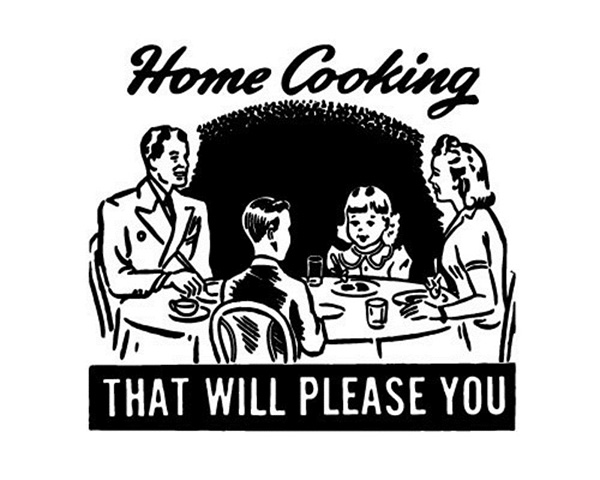The illusion of choices in choosing a restaurant - Toxic factory food from a handful of suppliers
Friday, January 29, 2016 by: Natural News Editor
Tags: factory food, restaurants, illusion of choice

(NaturalNews) There are dozens of chain restaurants from which we can choose when we go out to eat. Some are fast-food eateries with counters for ordering, and others are traditional sit-down table service restaurants. Probably McDonalds is the most well-known fast-food chain, but dozens of other chains dot the landscape of towns and cities throughout America. (Story by John P. Thomas, republished from HealthImpactNews.com.)
As of 2012, there were 263,944 fast food restaurants in America with a combined revenue of well over $100 billion.[1]
If we set aside all the reasons for eating in specific fast-food restaurants, and only focus on the quality of food that is served, then where should we eat? Which restaurants offer the least toxic food?
It might appear that we have dozens of choices, but this is actually an illusion. The difference between one fast-food restaurant and the next is negligible when considering the high levels of toxic ingredients that are in the food.
Restaurant Cooking used to be just like Home Cooking

When people traveled across America in the first half of the twentieth century up through the 1960s, they would have found numerous diners or mom & pop restaurants of one kind or another. These restaurants featured regionally authentic recipes that matched what people cooked in their homes. The restaurant kitchens were bigger than home kitchens, and mom & pop prepared food in larger quantities. If they had been cooking at home, the meals they prepared would have been the same, and they would have obtained the raw ingredients from the same sources.
Even institutional kitchens such as hospitals and nursing homes cooked much of their food from scratch just as was done in most American homes through the 1960s. All that began to change in the 1970s as regional factory size "kitchens" began to prepare frozen foods for wholesale distribution to hospitals, nursing homes, schools, military bases, fast-food eateries, and even some of America's most well-known restaurants.
A network of food factories are now supplying most all fast-food eating establishments with ready to eat food they can defrost and serve, or with prefabricated food they can defrost, heat, and serve. Sometimes even first-class table-service restaurants may serve factory food in addition to what their chefs prepare.
Don't Assume Restaurant Food is made in the Restaurant
When you go out and eat meals at chain restaurants, you are most likely consuming food that was produced in a factory. This can even be the case for some independent restaurants. Food factories use assembly line technology reminiscent of automobile assembly lines. Football stadium size factories crank out "food" products by the ton. The equipment they use and the processes they employ have no resemblance to home cooking or even to cooking that could be done in a local restaurant.Factory produced food is produced and distributed by several large companies who specialize in providing products for all types of restaurants. America's largest manufacturer of prepared food for restaurants is Sysco. This is how they describe themselves:
Sysco is the global leader in selling, marketing and distributing food products to restaurants, healthcare and educational facilities, lodging establishments and other customers who prepare meals away from home. Its family of products also includes equipment and supplies for the foodservice and hospitality industries. The company operates 194 distribution facilities serving approximately 425,000 customers. For Fiscal Year 2014 that ended June 28, 2014, the company generated sales of more than $46 billion.[2]
Sysco is not the only source of factory food that is sold to restaurants. There are others who compete with them to provide raw food, semi-prepared food, and completely cooked food. Restaurants often receive daily deliveries of perishable and non-perishable food from these suppliers.
In 1970, the commercial food service market that was served by companies such as Sysco was a 35 billion dollar per year industry. Today, it has grown to become a 255 billion dollar industry. [3]
Read more at HealthImpactNews.com.
Sources:
[1] HuffingtonPost.com
[2] Sysco.com
[3] Sysco.com
Factory food at FETCH.news
Get independent news alerts on natural cures, food lab tests, cannabis medicine, science, robotics, drones, privacy and more.
More news on factory food
Take Action: Support Natural News by linking to this article from your website
Permalink to this article:
Embed article link: (copy HTML code below):
Reprinting this article:
Non-commercial use OK, cite NaturalNews.com with clickable link.
Follow Natural News on Facebook, Twitter, Google Plus, and Pinterest
- Six little-known natural remedies for tinnitus
- Dandelion root far more effective in fighting cancer cells than chemotherapy
- Four bitter herbs heal the liver, gall bladder, and other ailments
- The eight best home remedies and holistic treatments to relieve tinnitus and ringing in the ears
- Artemisinin: A Cancer Smart Bomb
- Grow the ultimate survival garden by investing in these healing herbs that function as natural medicine
- Zombie apocalypse survival video just released: How to Spot a Vaccine Zombie (satire)
- Sickening: Major food corporations use tissue from aborted babies to manufacture flavor additives in processed foods
- Shock findings in new GMO study: Rats fed lifetime of GM corn grow horrifying tumors, 70% of females die early
- CDC whistleblower exposes massive autism cover-up perpetrated by government agency
- 4 enzyme rich foods that can dramatically improve digestion
- Article updated with new message from the Health Ranger
- Kidney disease requires magnesium
- Another huge benefit of sunshine exposure: Nitric oxide production boosts cardiovascular health
- INVESTIGATION: Three days before Dr. Bradstreet was found dead in a river, U.S. govt. agents raided his research facility to seize a breakthrough cancer treatment called GcMAF
- 'Miracle cure' controversy and why people should use DMSO for cancer, inflammation and more
- Homeopathy breakthrough: homeopathic solutions proven to carry memory of water and exhibit biological effects
- Six ways for the government to get out of debt (Opinion)
- Six little-known natural remedies for tinnitus
- Olive oil antioxidant naturally kills all cancer cells tested within an hour
- Foods that detox heavy metals - with tonic recipe
- Four bitter herbs heal the liver, gall bladder, and other ailments
- Curcumin causes colon cancer cells to self-destruct
- Frankincense oil kills cancer cells while boosting the immune system, studies show
- Dandelion root far more effective in fighting cancer cells than chemotherapy
- 'Miracle cure' controversy and why people should use DMSO for cancer, inflammation and more
- Research: Effective psychotherapy proven to positively alter your physical brain (no drugs required)
- Beat cancer with 35% hydrogen peroxide
- Cancer cases projected to skyrocket to one in two men in the future: How will you prevent it?
- Foods, herbs, and supplements that kill cancer - safer and more effective than drugs
- The eight best home remedies and holistic treatments to relieve tinnitus and ringing in the ears
- 10 outrageous (but true) facts about vaccines the CDC and the vaccine industry don't want you to know
- When MEDICINE becomes MURDER: America's vaccine narrative now mirrors Nazi eugenics propaganda
- Man's best friend can save your life from cancer! Dogs detect cancer with 90 percent accuracy
- Dispelling the Myths Surrounding Homeopathy
- The best and worst forms of magnesium to take as a supplement
- Supplements to detox the body from vaccinations
- Six little-known natural remedies for tinnitus
- The REAL FAKE NEWS exposed: '97% of scientists agree on climate change' is an engineered hoax... here's what the media never told you
- The 10 worst toxins hidden in vitamins, supplements and health foods
- Beat cancer with 35% hydrogen peroxide
- Olive oil antioxidant naturally kills all cancer cells tested within an hour
- Curcumin causes colon cancer cells to self-destruct
- Curcumin slays cancer cells in their tracks
- Four supplements that will benefit almost everyone
- Cannabis kicks Lyme disease to the curb
- Four bitter herbs heal the liver, gall bladder, and other ailments
- Frankincense oil kills cancer cells while boosting the immune system, studies show
- Foods that detox heavy metals - with tonic recipe
- Top 10 inexpensive food items that can PREVENT nearly every disease and disorder known to mankind
- Foods, herbs, and supplements that kill cancer - safer and more effective than drugs
- The United Nations 2030 Agenda decoded: It's a blueprint for the global enslavement of humanity under the boot of corporate masters
- Forget Filling Cavities: Regrow Your Teeth Instead
- Boost Low White Blood Cell Count and Immune Function Naturally
- EPA advisor admits the agency is funneling billions to climate groups ahead of Trump’s return to White House
- Newly released JFK files reveal Pentagon's role in creating Lyme disease and covid in the same lab
- Eleven days before Iran bombed Tel Aviv, my microscope revealed haunting images of EXACTLY what would happen
- Morphic resonance “remote viewing” reveals iconic Middle East images of stealth bombers, a falcon and a one-horned ram
- Mike Adams releases country western hit single: Goin’ Back in Time is Comin’ Home
- DECENTRALIZED SPIRITUALITY and the true teachings of Christ: Overcoming the censorship, threats and lies of organized religion to truly know God and the Universal Christ
- Global leaders unite to clamp down on “misinformation” with UN-backed Cascais Declaration
- I Want My Bailout Money – new song released by Mike Adams
- HEALTH SECRETS: How to Instantly Block MSG Toxicity Using Natural Substances (and the secret of Methylene Blue)
- The Health Ranger releases “Vaccine Zombie” song and music video, using AI-animated zombies for the music video
- BOMBSHELL: Internal Pfizer documents exposed and reveal at least 16 PERCENT of their mRNA vaccine "adverse events" are REPRODUCTIVE DISORDERS
- BOMBSHELL: Covid-19 mRNA nanoparticles EMIT LIGHT SIGNALS that communicate MAC addresses used for self-assembly inside the blood vessels
- Two containers with completed ballots fall out of truck in Florida
- BOMBSHELL: DNA testing kits are a SCAM to develop ethnic-specific bioweapons
- Amazing microscopy photos reveal how freezing crystals attempt to mimic electronic structures they are touching
- RFK Jr. clears key hurdle: Sen. Susan Collins backs controversial HHS nominee, signaling a new era for health policy
- The Coming Gold Revaluation: Strategic Financial Realignment in an Era of Dollar Collapse
- The AI Data Center Wars Have Begun… Farms, Water and Electricity is Stripped from Humans to Power the Machines
Science News & Studies
Medicine News and Information
Food News & Studies
Health News & Studies
Herbs News & Information
Pollution News & Studies
Cancer News & Studies
Climate News & Studies
Survival News & Information
Gear News & Information
News covering technology, stocks, hackers, and more



"Big Tech and mainstream media are constantly trying to silence the independent voices that dare to bring you the truth about toxic food ingredients, dangerous medications and the failed, fraudulent science of the profit-driven medical establishment.
Email is one of the best ways to make sure you stay informed, without the censorship of the tech giants (Google, Apple, Facebook, Twitter, YouTube, etc.). Stay informed and you'll even likely learn information that may help save your own life."
–The Health Ranger, Mike Adams























